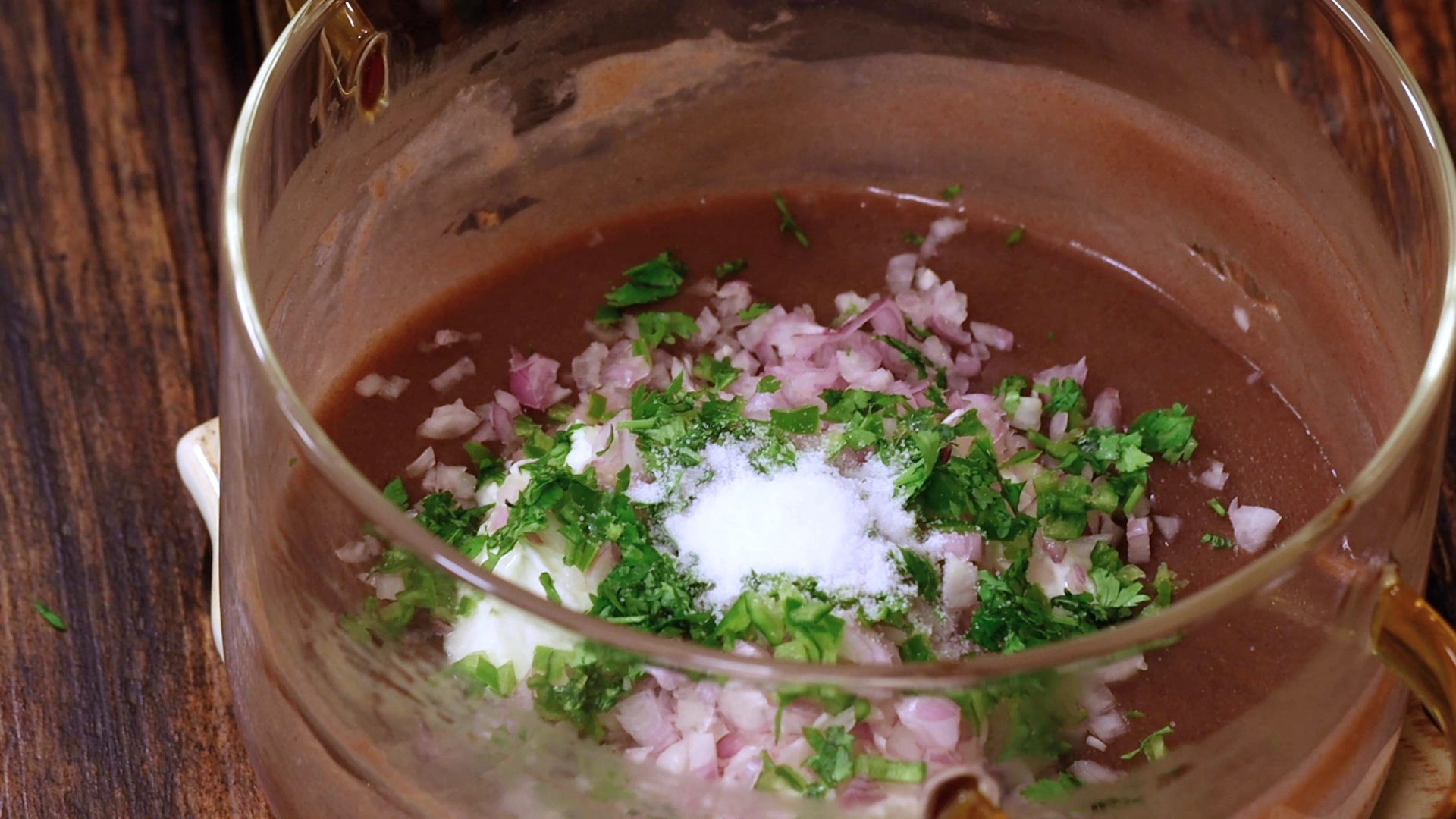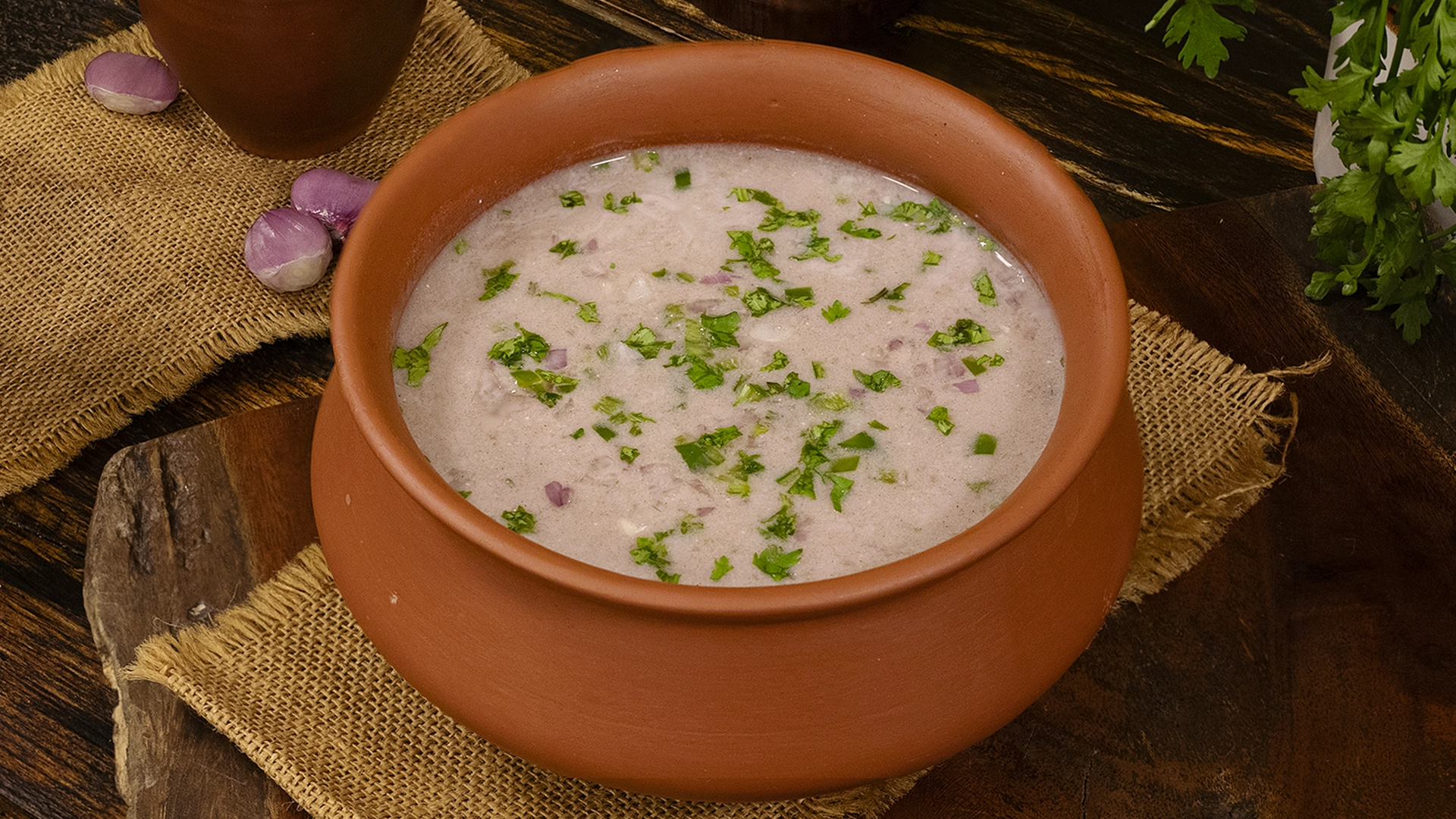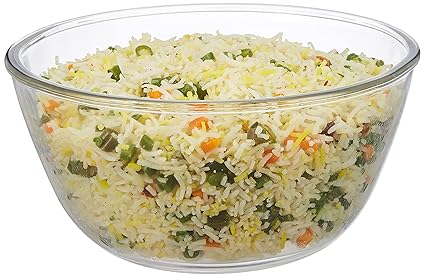There’s something about Ragi Kanji that feels ancestral. It’s the kind of drink that grandmothers used to make on summer afternoons — thick-bottomed pots gently bubbling on the stove, ladles scraping patiently, and the sharp scent of green chilli and shallots mixed with curd wafting through the house.
Ragi Kanji, or Ambali, is a cherished drink across South Indian households. While every region has its own version, the soul of this recipe remains the same — fermented ragi cooked slowly and cooled down, then mixed with buttermilk or curd and tempered with simple, fresh ingredients. In villages, it’s often stored in earthen pots to stay cool and refreshing all day long.
Some use sour buttermilk, others use fresh curd — either way, this drink has fed farmers, children, and elders alike, offering strength and calm during the blistering heat.
Why This Drink is Summer’s Best Friend
Ragi is one of those superfoods that has always been ahead of its time. Packed with calcium, fiber, and iron, it’s incredibly nutritious. But when you ferment it overnight and mix it with curd, it becomes more than just food — it becomes a tonic for your gut.
This kanji is a natural body coolant. It helps bring down internal heat, aids digestion, and keeps you hydrated. The fermented ragi boosts your probiotic levels naturally, helping build a healthier gut flora — and that means better digestion, better skin, and a happier you.
Plus, it’s light on the stomach, making it a great breakfast or mid-day drink during summer months.
What Goes In
Let’s take a look at the simple ingredients that make Ragi Kanji so powerful:
- Ragi Flour – The base of the dish. Earthy in flavour, ragi is rich in iron, calcium, and amino acids. Fermenting it makes the nutrients more bioavailable and gentler on digestion.
- Curd (Thick) – Adds creaminess and a gentle tang. Acts as a probiotic that cools the body and boosts gut health.
- Shallots – Add a sweet crunch and balance out the tangy-sour flavours. Shallots are also anti-inflammatory and add depth.
- Green Chillies – A subtle kick to brighten the flavour. It also aids metabolism and makes the drink feel alive.
- Coriander Leaves – Fresh, aromatic and cleansing. Helps detox and adds a pop of green.
- Salt – Balances all the flavours and enhances the natural tang of curd and earthiness of ragi.
- Water – Both for boiling and dilution. Helps control the thickness and keeps the drink light and smooth.
Making the Ragi Kanji
First things first — start by soaking your ragi flour in water the night before. This slow fermentation helps develop the flavour and unlocks nutrients in the ragi. By morning, you’ll notice a foamy layer floating on top. That’s your natural fermentation at work. Just remove the top layer gently and retain the settled ragi at the bottom. Give it a good mix.
Now bring some fresh water to boil in a saucepan. As it starts bubbling, slowly add your ragi slurry into it. This is the part where you stay patient — keep stirring gently as it simmers for a good 15 minutes. It will begin to thicken into a glossy, porridge-like texture. Once done, turn off the heat and let it cool completely. This part is important — you don’t want to mix curd into hot ragi.
After it’s cooled, you bring in all the other beautiful flavours. Add thick curd, finely chopped shallots, green chillies, coriander leaves, and salt. Stir everything together until you have a smooth, drinkable consistency. If it’s too thick, add a little cold water to loosen it up.
That’s it. No frills, just wholesome goodness.
💡 Pro Tip – Chill the kanji in a mud pot or clay matka. It not only stays cool for longer but also adds a rustic earthy flavour to the drink.
What Goes Along
Ragi Kanji is usually served as a meal on its own — especially for breakfast or lunch on a hot day. But if you’re feeling extra, pair it with a small helping of pickle (mango or lemon) or a few slices of raw cucumber. It’s light but filling, and doesn’t need much else.
How to Serve
Serve it cold, in a steel tumbler or traditional clay pot. Garnish with extra coriander if you like. If you’re entertaining guests, pour it into small glasses with a dash of roasted cumin on top for that restaurant-style flair.
Packing & Storage Tips
Ragi Kanji can be made ahead and stored in the fridge for 2–3 days. Store in a glass or earthen pot for best results. If the mixture thickens over time, just add a little water and stir before serving.
Party or Bulk Prep
Making for a crowd? Double or triple the quantities, and prepare the ragi base in one go. Keep the add-ins like curd, onions, and herbs ready to mix in just before serving. It makes for a unique and healthy drink option for brunches, potlucks, or summer get-togethers.
Ragi Kanji is the kind of recipe that doesn’t just feed your body — it nourishes you. It cools, heals, and comforts, all in one humble tumbler. Try it once, and you’ll keep coming back all summer long.
Ragi Kanji
Ingredients
Instructions
Prep Work
-
soak millet
soak the ragi flour in water overnight
-
skim foam
remove the foamy layer that forms on top and stir remaining -
chop aromatics
finely chop shallots, green chillies, and coriander leaves
Method
-
boil water
heat water in a saucepan until it comes to a rolling boil
-
cook millet mix
add the soaked ragi mixture and simmer until it thickens, stirring occasionally (about 15 mins) -
cool mixture
remove from heat and let the kanji cool completely -
mix in curd & herbs
stir in thick curd, chopped shallots, chillies, coriander, and salt into the cooled mixture -
adjust consistency
add water as needed to reach your desired pourable consistency -
serve
transfer to serving bowls or mudpots and enjoy
Nutrition Facts
Servings 4
- Amount Per Serving
- Calories 145kcal
- % Daily Value *
- Total Fat 2.5g4%
- Saturated Fat 1.2g6%
- Cholesterol 30mg10%
- Sodium 600mg25%
- Potassium 160mg5%
- Total Carbohydrate 24g8%
- Dietary Fiber 1.1g5%
- Sugars 3g
- Protein 12g24%
- Vitamin C 4 mg
- Calcium 270 mg
- Iron 1.3 mg
* Percent Daily Values are based on a 2,000 calorie diet. Your daily value may be higher or lower depending on your calorie needs.










